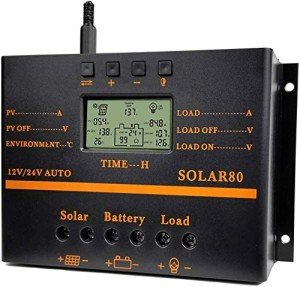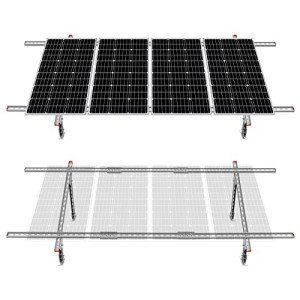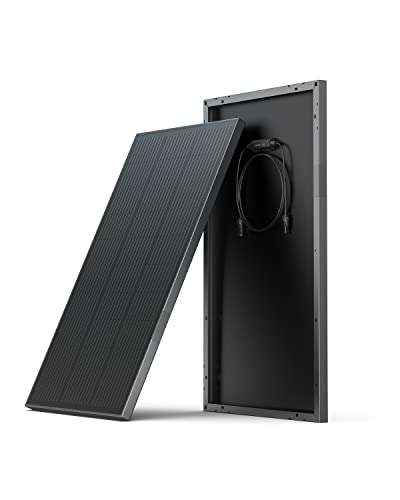When sunlight hits the solar cells, it gets absorbed and knocks electrons loose from their atoms. This action creates a flow of electricity. Think of it like a tiny electrical river flowing from the sunlight into your home! The direct current (DC) electricity produced then needs to change into alternating current (AC) to be usable in your home. That's where the inverter comes in.
The inverter takes that DC electricity and transforms it into AC electricity. This step is crucial because your home appliances run on AC power. Once that’s done, the electricity can power everything from your fridge to your TV. So, when people ask, “How do solar panels work?” the simple answer is that they convert sunlight into electricity you can use.
Plus, any extra electricity you generate can be sent back to the grid or stored for later use, depending on your setup. That means you can save even more on your electric bill! Understanding how solar panels generate electricity can really help you see the big picture of going green and making the shift to renewable energy.
Key Components of Solar Panel Systems
When diving into the question of "How Do Solar Panels Work," it’s essential to get familiar with the key components that make up a solar panel system. Understanding these parts helps you get a clearer picture of how everything ties together to harness the sun’s energy and convert it into usable electricity.
First up, we have the solar panels themselves. These beauties are made up of many smaller units called solar cells, which are usually made from silicon. They capture sunlight and convert it into direct current (DC) electricity. The more sunlight they soak up, the more electricity they generate. If you’re looking to reduce your electric bill, a solid set of solar panels is a great start.
Next, there’s the inverter. This little gadget takes that DC electricity from the panels and changes it into alternating current (AC) electricity, which is the kind used in your home. Inverters are vital for making sure your solar system works smoothly with your household appliances. If you want to power everything from your fridge to your favorite gadget, you really need a good inverter.
Don’t forget about the mounting system! These are the racks that hold your solar panels in place, ensuring they’re securely attached to your roof or the ground. Quality mounts help keep everything stable, regardless of weather conditions. Making sure your panels are at the right angle also plays a part in boosting their efficiency. It’s all about catching that sunlight just right.
Lastly, you might want a battery storage system. This isn’t mandatory, but it can be super handy. Batteries store extra electricity generated during the sunny days for use when the sun goes down or when clouds take over. Having that backup energy means you can keep the lights on and your devices charged even when the solar panels aren’t actively generating power.
80A Solar Charge Controller with USB Output
Keep your batteries charged and your devices powered effortlessly with this versatile solar charge controller
Product information
$49.99 $44.99
Product Review Score
4.74 out of 5 stars
16 reviewsProduct links
The Solar Energy Conversion Process
So, how do solar panels work? It starts with sunlight hitting the solar panels, which are made up of many solar cells. These cells are usually made of silicon, a material that's super good at absorbing light. When sunlight strikes these cells, it energizes the electrons, causing them to move around. This movement creates direct current (DC) electricity.
But we can't just plug our devices into solar panels, right? That’s where an inverter comes in. The inverter changes the DC electricity into alternating current (AC) electricity, which is what your home appliances use. This little gadget is crucial for making your solar energy usable.
Next, the AC electricity flows from the inverter to your electrical panel. Here, it gets distributed throughout your home to power lights, appliances, and everything else. If you produce more electricity than you use, many setups let you send that extra energy back to the grid. You might even get a credit on your bill!
The entire process is pretty efficient, and it all happens seamlessly. With solar panels, you harness the sun's energy and turn it into power for your home. So, if you ever wondered how do solar panels work, now you know it’s all about catching sunlight, turning it into electricity, and keeping your life running smoothly. Pretty cool, huh?
ECO-WORTHY Adjustable Solar Panel Mounting Brackets Kit
ECO-WORTHY Adjustable Solar Panel Mounting Brackets Kit keeps your solar panels secure and easily adjustable for optimal sun exposure
Product information
$169.99 $118.99
Product Review Score
4.56 out of 5 stars
50 reviewsProduct links
Benefits of Using Solar Power at Home
Using solar power at home comes with a bunch of perks that can make your life easier and your wallet happier. First off, you’ll save on electricity bills. Once your solar panels are up and running, you won’t need to rely as much on your utility company. This means more cash stays in your pocket month after month.
Another cool benefit is that solar power is eco-friendly. You’re harnessing energy from the sun, which is renewable and doesn’t produce harmful emissions. So, while you’re saving money, you’re also helping the environment. It feels good to know you're doing your part to combat climate change.
Having solar panels can also increase the value of your home. Many buyers look for energy-efficient features, and solar panels stand out. This means that if you ever decide to sell, you could potentially fetch a better price.
And let’s not forget about energy independence. By setting up solar power, you’re relying less on outside energy sources. You’re taking control of your energy needs. It’s all about being prepared, especially during those unexpected power outages.
Understanding how do solar panels work can help you optimize these benefits even more. Once you grasp the basics, you can feel confident in your investment and enjoy everything solar energy has to offer.






